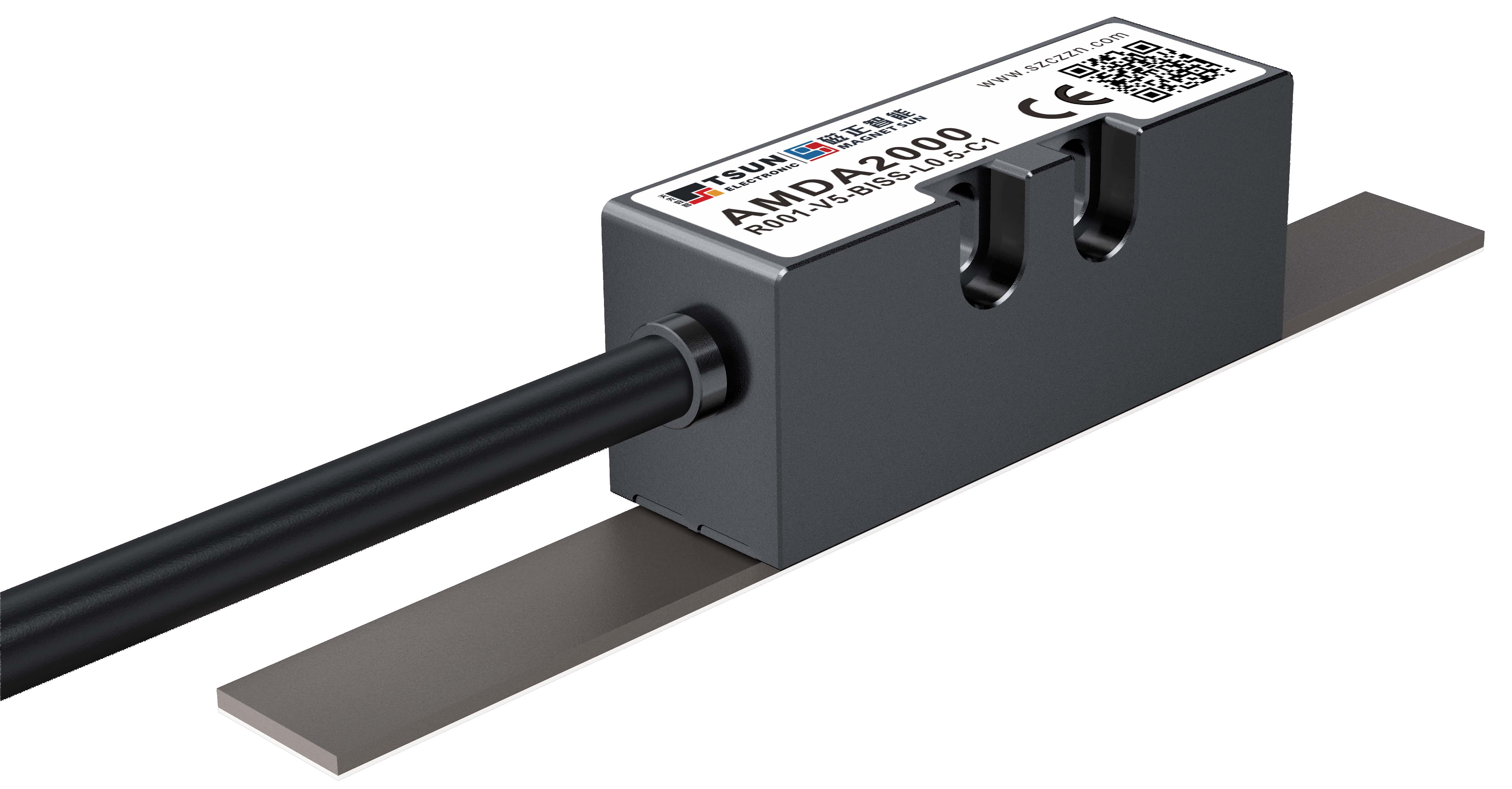In the wave of intelligent transformation in the electronics industry, high-precision motion control technology has always been one of the core driving forces. As a key component of the position feedback system, the performance of the encoder directly determines the positioning accuracy, operational efficiency and reliability of the equipment. In recent years, absolute value magnetic grating encoders have been gradually replacing traditional photoelectric encoders and becoming the preferred choice for high-end electronic manufacturing equipment, thanks to their unique anti-interference ability, environmental adaptability and power-off position memory function. In this field, Shenzhen Tianxian Digital Intelligence has launched the AMDA2000 long-stroke dual-channel absolute value magnetic grating encoder. With its breakthrough technological innovation and outstanding engineering performance, it not only fills the gap of domestic high-end encoders but also sets a new technical benchmark in key performance aspects.
The working principle of the absolute value magnetic grating encoder determines its unique value in the electronics industry. Unlike traditional
incremental encoders, absolute value encoders can directly read absolute position information at the moment of power-on through a unique
magnetic grid arrangement and signal decoding technology, completely avoiding the time loss and potential collision risk caused by return-to-zero
operations. This feature is particularly important in fields such as semiconductor manufacturing and precision electronic assembly, where the
production rhythm is strictly required. The innovation of AMDA2000 lies in its dual-channel design. The main channel is responsible for providing
a resolution of up to 0.1 microns, while the secondary channel is responsible for real-time data verification. This redundant architecture enables
it to maintain stable signal output even in a strong electromagnetic interference environment. Actual tests show that even in a 30V/m RF interference environment,
the position output error of the AMDA2000 can still be controlled within ±1 count, a performance that has reached military-grade standards.
The special working conditions in the electronics industry impose extremely strict requirements on encoders. At the working site of the SMT
placement machine, the metal dust produced by the evaporation of solder paste will quickly contaminate the reading head of the optical encoder.
On the lithium battery production line, the corrosive vapor of the electrolyte constantly threatens the reliability of electronic components.
In semiconductor cleanrooms, encoders must also withstand frequent chemical cleaning. The AMDA2000 completely seals the magnetic
grid sensing unit through an IP67-level epoxy resin potting process. Actual tests show that it can operate continuously for 3000 hours in a chemical
spray with a pH value ranging from 2 to 12 without performance degradation. What is even more commendable is that its unique magnetic signal
sensing mechanism is completely insensitive to contamination. Even if the magnetic grating surface is covered with a 5-micron thick layer of solder paste residue, it can still
maintain normal readings. This feature enables it to successfully replace the original imported grating system, extending the equipment
maintenance cycle from once a week to once a quarter.
In high-speed and high-precision application scenarios, the performance of AMDA2000 is equally remarkable. The speed boundaries of modern electronic
manufacturing equipment are constantly being refreshed. For instance, the latest generation of FPC flexible circuit board laser cutting machines has a moving
platform acceleration of 5G and an instantaneous speed exceeding 4m/s. Traditional magnetic grating encoders often face the risk of signal loss under such
working conditions. Through its innovative adaptive interpolation algorithm and low-latency signal processing architecture, Tianxian Digital Intelligence
enables the AMDA2000 to maintain a resolution capability of 0.1 microns even at a linear speed of 5m/s. The actual test data of a domestic high-end surface
mount technology (SMT) machine manufacturer shows that after using the AMDA2000, the repeat positioning accuracy of the equipment at a movement
speed of 4m/s reaches ±2 microns, which is 30% higher than that when using imported competing products. This breakthrough in high-speed performance
has given Chinese equipment manufacturers a significant technological edge when competing for international orders.
The compatibility of communication protocols is often the bottleneck for domestic encoders to enter the high-end market. Tianxian has achieved breakthrough
multi-protocol support on the AMDA2000, including industrial standards such as BiSS-C and SSI, mainstream Japanese protocols like Tama River and Panasonic,
as well as the universal RS-485 interface. This all-round compatible design brings significant engineering value. In the case of a certain semiconductor equipment
enterprise in Shenzhen, AMDA2000 directly replaced the encoder of a certain Japanese brand. Not only was there no need to modify the driver parameters,
but also remote diagnosis was achieved through the two-way communication function of BiSS-C, significantly reducing the time for troubleshooting.
What is even more commendable is that its ultra-long cycle encoding capability of 16.384 meters, combined with segmented calibration technology,
has successfully solved the position feedback problem of large-sized OLED panel inspection equipment. In this niche field, AMDA2000 has become the de facto industry standard.
Of course, the pace of technological innovation never stops. In the next-generation product planning, Tianxian Digital Intelligence has already demonstrated
a prototype of an intelligent encoder integrated with AI diagnostic functions. By monitoring the status of the magnetic grid in real time to predict the remaining
lifespan, this will advance the equipment maintenance mode from regular inspections to a new stage of on-demand maintenance. Meanwhile,
for the ultra-high vacuum environment required in cutting-edge applications such as extreme ultraviolet lithography, specially treated magnetic grid
materials are also under verification. It can be foreseen that as China's electronic industry moves towards more advanced fields, domestic absolute
value magnetic grating encoders represented by AMDA2000 will continue to break through technological boundaries and provide stronger core support for intelligent manufacturing.

Looking at the application and development of absolute value magnetic grating encoders in the electronics industry, the success of Tianxian Digital Intelligence's
AMDA2000 is by no means accidental. Behind it lies the concentrated explosion of decades of technological accumulation in China's equipment manufacturing
industry, and it is also a model work of collaborative innovation among industry, academia, research and application. From breaking through the technological
blockade of international giants to leading the new industry standards, the development trajectory of AMDA2000 confirms a truth: in the field of high-end manufacturing,
only by mastering core and key technologies can one gain the initiative in global competition. In the future, with the integrated application of new technologies
such as 5G and artificial intelligence, absolute value magnetic grating encoders are bound to open up broader application prospects, and Chinese brands are
expected to play an increasingly important role in this process.